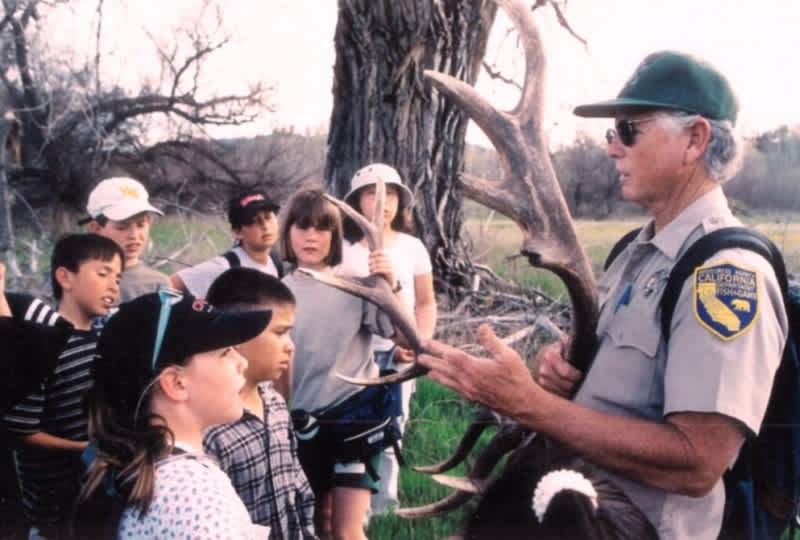Woods Smarts: Developing Your “Naturalistic Intelligence”
James Swan 02.17.14

Intelligence quotient (IQ) tests measure your ability to solve problems including reasoning, problem-solving, recognizing relationships between things, and the ability to memorize and retrieve information and understand concepts. Is that all there is to “intelligence,” especially when it comes to outdoor recreation?
Schools design curriculums to help students get high scores on tests, as said scores influence how much funding schools receive. Harvard psychologist Howard Gardner is calling for recognition of a greater range of our abilities. He believes that we have at least eight different types of intelligence.
When Gardner’s book, Multiple Intelligences, came out in his 1993, he recognized seven different intelligences:
- Linguistic: very adept with words and auditory skills, good at writing; has a good memory; a good communicator, verbally and as a writer.
- Logical-mathematical: strong conceptual thinker, enjoys questioning and wondering about natural events; good scientists.
- Spatial: thinks in visual images easily, very aware of everything around them; native people are especially good in spatial intelligence, as are designers.
- Musical: has a keen ear, finds it easy to keep time and perceive natural rhythms, as well as identify animal sounds and calls.
- Bodily-kinesthetic: enjoys sports and games, hiking, climbing and dance.
- Interpersonal: organizes, communicates, and leads others with ease, may have a strong sense of empathy for plants and animals; excels at teaching, perhaps leading social movements.
- Intrapersonal: has a strong internal world, fueled by dreams, intuitions and feelings; has the resources to be an artist, possibly a visionary.
Each of us has all of these intelligences to a certain degree. Those who have a natural gift for art, music, design, dance, and sports, may not be at the top of the IQ chart, but they can be geniuses in others.
Gardner believes that having special abilities in one area can enable someone to do things their own way to accomplish the same objective that people with high IQs might. Additionally, if people can feel good about being adept at one of the other intelligences, their regular IQ scores also increase.
Gardner has added an eighth intelligence, naturalistic intelligence: the ability to recognize patterns in nature, sensory awareness, enjoying nature, keeping notes about what you hear and see while outdoors, and an ability to categorize natural objects and identify them. Teddy Roosevelt, Rachel Carson, Gifford Pinchot, John Muir, John James Audubon, Aldo Leopold, Roger Tory Peterson, Jacques and Jean-Michel Cousteau, Jane Goodall, and David Attenborough are examples of people with a strong naturalistic intelligence.
Learning ecological facts is important as is learning the vocabulary of ecology, but being aware of what’s around you, and then organizing that information into systems, is also very important. Naturalistic intelligence has considerable value in other fields including medicine, human services, and some forms of business.
How do you develop naturalistic intelligence?
My parents developed a method that was helpful. Looking out the windows of the family house that was located on an island in the Detroit River, there was a continuous flow of birds. Aside from good habitat in the surrounding area, birds would make a resting stop before crossing Lake Erie heading south, or in the spring, after crossing the lake heading north. With the help of a bird feeder, my mother and father would point out new birds, calling attention to some of the most distinguishing unique features—colors, size, shape, bill shape, and so on.
They bought a number of picture books of birds. My job was to recognize the most distinguishing characteristics of the birds and then go to the books and look them up. Each new bird was a challenge because my first contact was with its physical characteristics. I would first write them down, then look for the pictures in the books to identify them. Sometimes we’d make up names until I could find the proper names in the books.
It’s not that names aren’t important, but let’s not put the cart before the horse. Latin names are for the scientific community to use to ensure that scientists are talking about the same critters. Anyone can call a bird or animal whatever they want. If enough people agree on a name it’s called a “common name.” For example, a diving duck having white sides, black head and tail, and a bright blue bill is called the “Blue Bill” (although females are brown, with gray sides, and a white ring on its cheeks around its grayish bill). In other areas the same bird is called a “Scaup,” the name coming from the bird’s raspy quack call.
To develop your naturalistic intelligence, go for walks in natural areas. Pick out something that’s present in variety you want to study. It could be leaves of trees, stones in a creek bed, insects, birds, flowers, fish, mammals, and the like. Assemble as many specimens as you can and/or take pictures with your digital camera. Note the distinguishing characteristics of each. How are they similar and different? Is there any order, such as bills with all the same kind of beaks? How about similar colors of flowers or patterns of leaves? At first invent names, if you want. Then, get a book (field guide) and look up their names and information about them. Now step back and compare them.
You’ll find that as your naturalistic intelligence increases, you and your kids will start to to not just see more different things in natural areas, but you’ll recognize differences more quickly. One of the exciting things about nature is there are always surprises.
My only criticism of Gardner’s naturalistic intelligence is that I think it also needs a common name. How about “wood smarts?”

